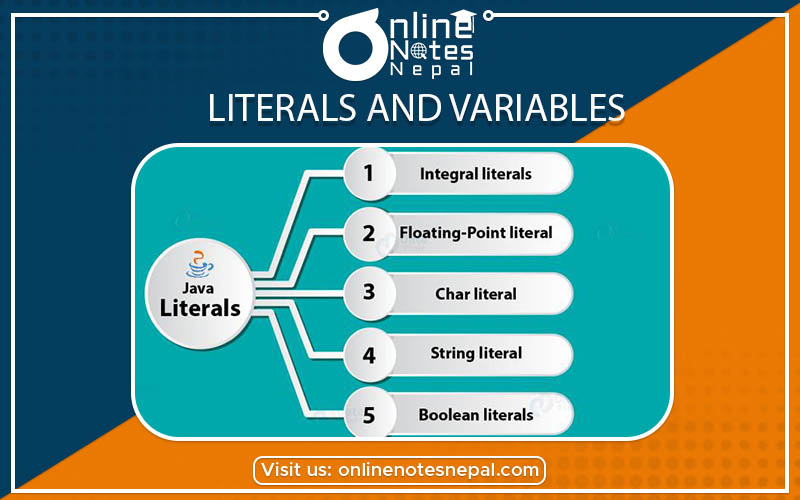Published by: sadikshya
Published date: 16 Jun 2021

Literals and Variables are important topics in java programming basics. You may have noticed that the new keyword isn’t used when initializing a variable of a primitive type. Primitive types are special data types built into the language; they are not objects created from a class. A literal is the source code representation of a fixed value; literals are represented directly in your code without requiring computation. As shown below, it’s possible to assign a literal to a variable of a primitive type:
boolean result = true;
char capital C = ‘C’;
byte b = 100;
short s = 10000;
int i = 100000;
The variable is the basic unit of storage in a Java program. A variable is defined by the combination of an identifier, a type, and an optional initializer. In addition, all variables have a scope, which defines their visibility, and a lifetime. These elements are examined next.
In Java, all variables must be declared before they can be used. The basic form of a variable declaration is shown here:
type identifier [ = value] [, identifier [= value] …];
The type is one of Java’s atomic types or the name of a class or interface. (Class and interface types are discussed later in Part I of this book.) The identifier is the name of the variable. You can initialize the variable by specifying an equal sign and a value. Keep in mind that the initialization expression must result in a value of the same (or compatible) type as that specified for the variable. To declare more than one variable of the specified type, use a comma-separated list.
Here are several examples of variable declarations of various types. Note that some include an initialization.
int a, b, c; // declares three ints, a, b, and c.
int d = 3, e, f = 5; // declares three more ints, initializing
// d and f.
byte z = 22; // initializes z.
double pi = 3.14159; // declares an approximation of pi.
char x = ‘x’; // the variable x has the value ‘x’.
The identifiers that you choose have nothing intrinsic in their names that indicates their type. Java allows any properly formed identifier to have any declared type.
Although the preceding examples have used only constants as initializers, Java allows variables to be initialized dynamically, using any expression valid at the time the variable is declared.
For example, here is a short program that computes the length of the hypotenuse of
a right triangle gave the lengths of its two opposing sides:
// Demonstrate dynamic initialization.
class DynInit {
public static void main(String args[]) {
double a = 3.0, b = 4.0;
// c is dynamically initialized
double c = Math.sqrt(a * a + b * b);
system.out.println(“Hypotenuse is ” + c);
}
}
Here, three local variables—a, b, and c—are declared. The first two, a and b, are initialized by constants. However, c is initialized dynamically to the length of the hypotenuse (using the Pythagorean theorem). The program uses another of Java’s built-in methods, sqrt( ), which is a member of the Math class, to compute the square root of its argument. The key point here is that the initialization expression may use any element valid at the time of the initialization, including calls to methods, other variables, or literals.